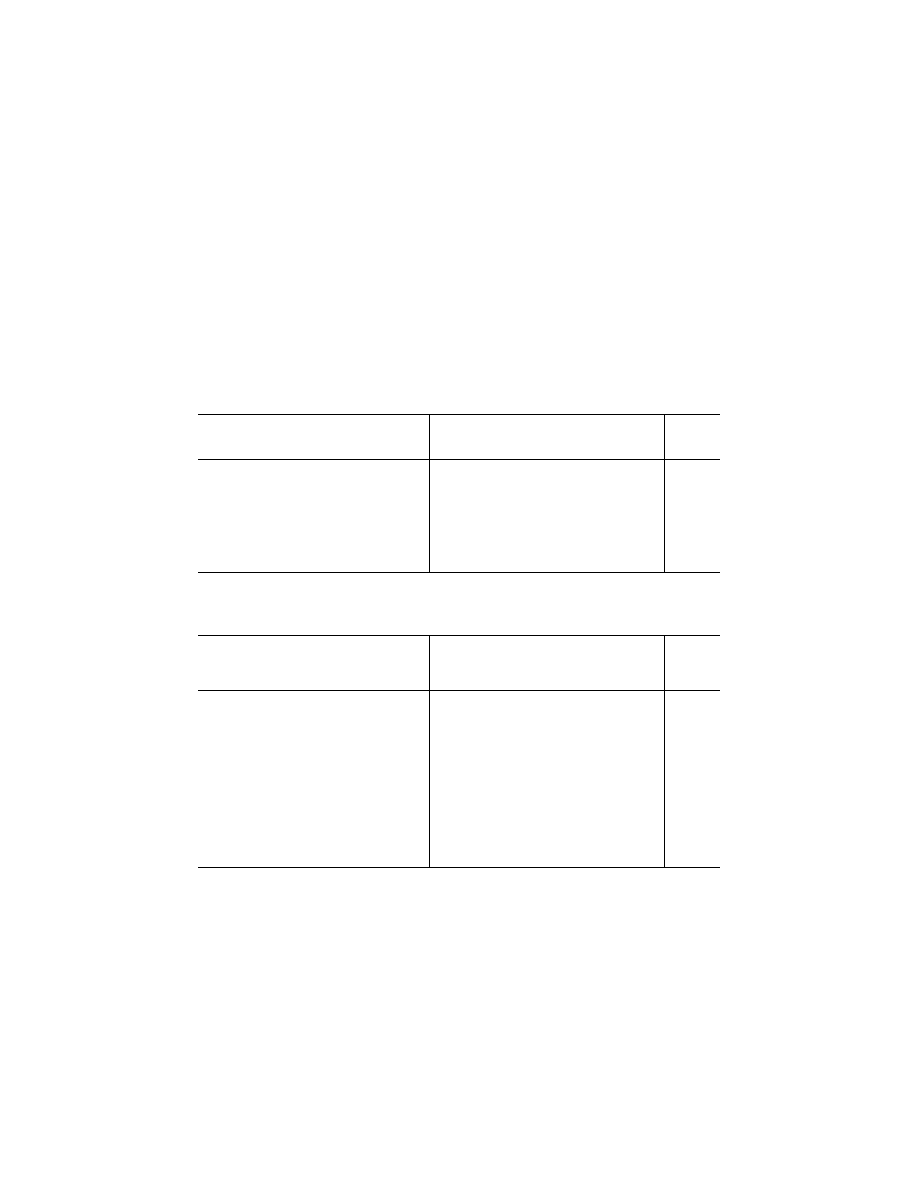
436
49 CFR Ch. I (10–1–23 Edition)
§ 172.502
(5) Combustible liquids in non-bulk
packagings.
[Amdt. 172–123, 55 FR 52599, Dec. 21, 1990, as
amended by Amdt. 172–149, 61 FR 27173, May
30, 1996; 74 FR 2253, Jan. 14, 2009; 76 FR 3367,
Jan. 19, 2011; 87 FR 79773, Dec. 27, 2022]
§ 172.502
Prohibited and permissive
placarding.
(a)
Prohibited placarding.
Except as
provided in paragraph (b) of this sec-
tion, no person may affix or display on
a packaging, freight container, unit
load device, motor vehicle or rail car—
(1) Any placard described in this sub-
part unless—
(i) The material being offered or
transported is a hazardous material;
(ii) The placard represents a hazard
of the hazardous material being offered
or transported; and
(iii) Any placarding conforms to the
requirements of this subpart.
(2) Any sign, advertisement, slogan
(such as ‘‘Drive Safely’’), or device
that, by its color, design, shape or con-
tent, could be confused with any
placard prescribed in this subpart.
(b)
Exceptions.
(1) The restrictions in
paragraph (a) of this section do not
apply to a bulk packaging, freight con-
tainer, unit load device, transport vehi-
cle or rail car which is placarded in
conformance with TDG Regulations,
the IMDG Code or the UN Rec-
ommendations (IBR, see § 171.7 of this
subchapter).
(2) The restrictions of paragraph (a)
of this section do not apply to the dis-
play of a BIOHAZARD marking, a
‘‘HOT’’ marking, a sour crude oil haz-
ard marking, or an identification num-
ber on a white square-on-point configu-
ration in accordance with § 172.323(c),
§ 172.325(c), § 172.327(a), or § 172.336(b) of
this part, respectively.
(c)
Permissive placarding.
Placards
may be displayed for a hazardous mate-
rial, even when not required, if the
placarding otherwise conforms to the
requirements of this subpart.
[Amdt. 172–123, 55 FR 52599, Dec. 21, 1990, as
amended at 56 FR 66259, Dec. 20, 1991; Amdt.
172–151, 62 FR 1230, Jan. 8, 1997; 62 FR 39389,
39407, July 22, 1997; 66 FR 8647, Feb. 1, 2001; 66
FR 33426, June 21, 2001; 67 FR 53137, Aug. 14,
2002; 68 FR 75741, Dec. 31, 2003; 76 FR 3367,
Jan. 19, 2011; 80 FR 72923, Nov. 23, 2015]
§ 172.503
Identification number dis-
play on placards.
For procedures and limitations per-
taining to the display of identification
numbers on placards, see § 172.334.
[Amdt. 172–58, 45 FR 34701, May 22, 1980]
§ 172.504
General placarding require-
ments.
(a)
General.
Except as otherwise pro-
vided in this subchapter, each bulk
packaging, freight container, unit load
device, transport vehicle or rail car
containing any quantity of a hazardous
material must be placarded on each
side and each end with the type of plac-
ards specified in tables 1 and 2 of this
section and in accordance with other
placarding requirements of this sub-
part, including the specifications for
the placards named in the tables and
described in detail in §§ 172.519 through
172.560.
(b)
DANGEROUS placard.
A freight
container, unit load device, transport
vehicle, or rail car which contains non-
bulk packages with two or more cat-
egories of hazardous materials that re-
quire different placards specified in
table 2 of paragraph (e) of this section
may be placarded with a DANGEROUS
placard instead of the separate
placarding specified for each of the ma-
terials in table 2 of paragraph (e) of
this section. However, when 1,000 kg
(2,205 pounds) aggregate gross weight
or more of one category of material is
loaded therein at one loading facility
on a freight container, unit load de-
vice, transport vehicle, or rail car, the
placard specified in table 2 of para-
graph (e) of this section for that cat-
egory must be applied.
(c)
Exception for less than 454 kg (1,001
pounds).
Except for bulk packagings
and hazardous materials subject to
§ 172.505, when hazardous materials cov-
ered by table 2 of this section are
transported by highway or rail, plac-
ards are not required on—
(1) A transport vehicle or freight con-
tainer which contains less than 454 kg
(1001 pounds) aggregate gross weight of
hazardous materials covered by table 2
of paragraph (e) of this section; or
(2) A rail car loaded with transport
vehicles or freight containers, none of
which is required to be placarded.

437
Pipeline and Haz. Matls. Safety Admin., DOT
§ 172.504
The exceptions provided in paragraph
(c) of this section do not prohibit the
display of placards in the manner pre-
scribed in this subpart, if not otherwise
prohibited (see § 172.502), on transport
vehicles or freight containers which
are not required to be placarded.
(d)
Exception for empty non-bulk pack-
ages.
Except for hazardous materials
subject to § 172.505, a non-bulk pack-
aging that contains only the residue of
a hazardous material covered by Table
2 of paragraph (e) of this section need
not be included in determining
placarding requirements.
(e)
Placarding tables.
Placards are
specified for hazardous materials in ac-
cordance with the following tables:
T
ABLE
1
TO
P
ARAGRAPH
(e)
Category of material (Hazard class or division number
and additional description, as appropriate)
Placard name
Placard de-
sign section
reference
(§ )
1.1 ....................................................................................
EXPLOSIVES 1.1 ............................................................
172.522
1.2 ....................................................................................
EXPLOSIVES 1.2 ............................................................
172.522
1.3 ....................................................................................
EXPLOSIVES 1.3 ............................................................
172.522
2.3 ....................................................................................
POISON GAS ..................................................................
172.540
4.3 ....................................................................................
DANGEROUS WHEN WET ............................................
172.548
5.2 (Organic peroxide, Type B, liquid or solid, tempera-
ture controlled).
ORGANIC PEROXIDE ....................................................
172.552
6.1
(material poisonous by inhalation (see § 171.8 of
this subchapter)).
POISON INHALATION HAZARD ....................................
172.555
7 (Radioactive Yellow III label only) ................................
RADIOACTIVE
1
..............................................................
172.556
1
RADIOACTIVE placards are also required for: All shipments of unpackaged LSA–I material or SCO–I; all shipments required
by §§ 173.427, 173.441, and 173.457 of this subchapter to be operated under exclusive use; and all closed vehicles used in ac-
cordance with § 173.443(d).
T
ABLE
2
TO
P
ARAGRAPH
(e)
Category of material
(hazard class or division number and additional descrip-
tion, as appropriate)
Placard name
Placard
design
section
reference
(§ )
1.4 ....................................................................................
EXPLOSIVES 1.4 ............................................................
172.523
1.5 ....................................................................................
EXPLOSIVES 1.5 ............................................................
172.524
1.6 ....................................................................................
EXPLOSIVES 1.6 ............................................................
172.525
2.1 ....................................................................................
FLAMMABLE GAS ..........................................................
172.532
2.2 ....................................................................................
NON–FLAMMABLE GAS ................................................
172.528
3 .......................................................................................
FLAMMABLE ...................................................................
172.542
Combustible liquid ...........................................................
COMBUSTIBLE ...............................................................
172.544
4.1 ....................................................................................
FLAMMABLE SOLID .......................................................
172.546
4.2 ....................................................................................
SPONTANEOUSLY COMBUSTIBLE ..............................
172.547
5.1 ....................................................................................
OXIDIZER ........................................................................
172.550
5.2 (Other than organic peroxide, Type B, liquid or
solid, temperature controlled).
ORGANIC PEROXIDE ....................................................
172.552
6.1 (other than material poisonous by inhalation) ..........
POISON ...........................................................................
172.554
6.2 ....................................................................................
NONE.
8 .......................................................................................
CORROSIVE ...................................................................
172.558
9 .......................................................................................
CLASS 9 (see § 172.504(f)(9)) ........................................
172.560
(f)
Additional placarding exceptions.
(1)
When more than one division placard is
required for Class 1 materials on a
transport vehicle, rail car, freight con-
tainer or unit load device, only the
placard representing the lowest divi-
sion number must be displayed.
(2) A FLAMMABLE placard may be
used in place of a COMBUSTIBLE
placard on—
(i) A cargo tank or portable tank.
(ii) A compartmented tank car which
contains both flammable and combus-
tible liquids.
(3) A NON-FLAMMABLE GAS
placard is not required on a transport
vehicle which contains non-flammable
gas if the transport vehicle also con-
tains flammable gas or oxygen and it is
placarded with FLAMMABLE GAS or
OXYGEN placards, as required.
(4) OXIDIZER placards are not re-
quired for Division 5.1 materials on

438
49 CFR Ch. I (10–1–23 Edition)
§ 172.505
freight containers, unit load devices,
transport vehicles or rail cars which
also contain Division 1.1 or 1.2 mate-
rials and which are placarded with EX-
PLOSIVES 1.1 or 1.2 placards, as re-
quired.
(5) For transportation by transport
vehicle or rail car only, an OXIDIZER
placard is not required for Division 5.1
materials on a transport vehicle, rail
car or freight container which also con-
tains Division 1.5 explosives and is
placarded with EXPLOSIVES 1.5 plac-
ards, as required.
(6) The EXPLOSIVE 1.4 placard is not
required for those Division 1.4 Compat-
ibility Group S (1.4S) materials that
are not required to be labeled 1.4S.
(7) For domestic transportation of
oxygen, compressed or oxygen, refrig-
erated liquid, the OXYGEN placard in
§ 172.530 of this subpart may be used in
place of a NON-FLAMMABLE GAS
placard.
(8) For domestic transportation, a
POISON INHALATION HAZARD
placard is not required on a transport
vehicle or freight container that is al-
ready placarded with the POISON GAS
placard.
(9) For Class 9, a CLASS 9 placard is
not required for domestic transpor-
tation, including that portion of inter-
national transportation, defined in
§ 171.8 of this subchapter, which occurs
within the United States. However, a
bulk packaging must be marked with
the appropriate identification number
on a CLASS 9 placard, an orange panel,
or a white square-on-point display con-
figuration as required by subpart D of
this part.
(10) For Division 6.1, PG III mate-
rials, a POISON placard may be modi-
fied to display the text ‘‘PG III’’ below
the mid line of the placard.
(11) For domestic transportation, a
POISON placard is not required on a
transport vehicle or freight container
required to display a POISON INHALA-
TION HAZARD or POISON GAS
placard.
(g) For shipments of Class 1 (explo-
sive materials) by aircraft or vessel,
the applicable compatibility group let-
ter must be displayed on the placards,
or labels when applicable, required by
this section. When more than one com-
patibility group placard is required for
Class 1 materials, only one placard is
required to be displayed, as provided in
paragraphs (g)(1) through (g)(4) of this
section. For the purposes of paragraphs
(g)(1) through (g)(4), there is a distinc-
tion between the phrases
explosive arti-
cles
and
explosive substances. Explosive
article
means an article containing an
explosive substance; examples include
a detonator, flare, primer or fuse.
Ex-
plosive substance
means a substance
contained in a packaging that is not
contained in an article; examples in-
clude black powder and smokeless pow-
der.
(1) Explosive articles of compat-
ibility groups C, D or E may be plac-
arded displaying compatibility group
E.
(2) Explosive articles of compat-
ibility groups C, D, or E, when trans-
ported with those in compatibility
group N, may be placarded displaying
compatibility group D.
(3) Explosive substances of compat-
ibility groups C and D may be plac-
arded displaying compatibility group
D.
(4) Explosive articles of compat-
ibility groups C, D, E or G, except for
fireworks, may be placarded displaying
compatibility group E.
[Amdt. 172–123, 55 FR 52600, Dec. 21, 1990]
E
DITORIAL
N
OTE
: For F
EDERAL
R
EGISTER
ci-
tations affecting § 172.504, see the List of CFR
Sections Affected, which appears in the
Finding Aids section of the printed volume
and at
www.govinfo.gov.
§ 172.505
Placarding for subsidiary
hazards.
(a) Each transport vehicle, freight
container, portable tank, unit load de-
vice, or rail car that contains a poi-
sonous material subject to the ‘‘Poison
Inhalation Hazard’’ shipping descrip-
tion of § 172.203(m) must be placarded
with a POISON INHALATION HAZARD
or POISON GAS placard, as appro-
priate, on each side and each end, in
addition to any other placard required
for that material in § 172.504. Duplica-
tion of the POISON INHALATION
HAZARD or POISON GAS placard is
not required.
(b) In addition to the RADIOACTIVE
placard which may be required by
§ 172.504(e), each transport vehicle,
portable tank or freight container that


